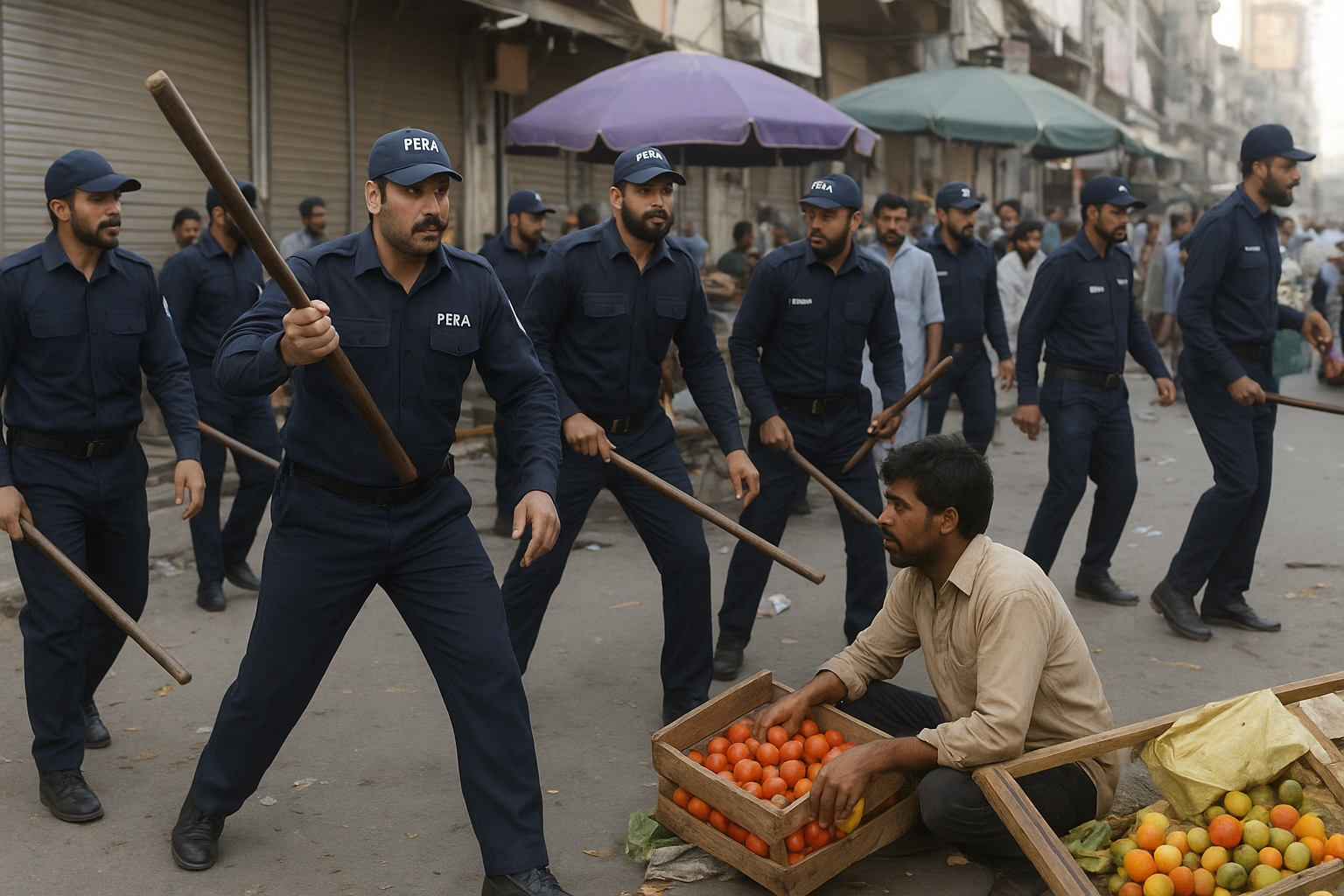Punjab Enforcement and Regulatory Authority (PERA): Promise, Pitfalls, and the Way Forward
Abstract
The Government of Punjab’s decision to create the Punjab Enforcement & Regulatory Authority (PERA) marks a major institutional reform aimed at curbing land grabbing, hoarding, and other public-welfare violations. While the initiative presents an opportunity for streamlined governance, this article examines its scope, structural challenges, and potential misuse within Punjab’s political and administrative environment. It concludes with recommendations for balanced, transparent, and citizen-centered enforcement.
Introduction
The establishment of PERA marks another chapter in Pakistan’s long history of administrative restructuring. Ostensibly created to consolidate enforcement and recovery functions across departments, PERA promises to improve governance efficiency. Yet, beneath the surface lies a deeper issue: why was another authority needed when departments like the Revenue Board, Anti-Corruption Establishment (ACE), and local administrations already exist? The creation of PERA implies that earlier arrangements proved insufficient, either due to institutional inefficiency, lack of coordination, or political compromises.
This article provides an objective analysis of PERA’s purpose, scope, advantages, negatives, and policy recommendations—evaluating how the reform could either strengthen or compromise governance in Punjab.
Purpose and Scope of PERA
Purpose
-
To address enforcement gaps related to hoarding, inflation, encroachments, and illegal land occupation.
-
To shift from fragmented, department-based enforcement toward an integrated provincial model.
-
To coordinate multiple regulatory functions under one umbrella, promoting efficiency and accountability.
Scope
-
The declared purpose of PERA is to centralize enforcement of land recovery, revenue collection, and administrative implementation. Its intended scope extends to:
-
Recovery of state land from illegal occupation.
-
Coordination among law enforcement bodies to execute administrative decisions.
-
Enhancement of transparency in property and revenue records.
-
Supporting judicial and quasi-judicial decisions through field enforcement.
In theory, these functions align with modern governance needs. However, their practical application depends on institutional integrity and political neutrality—qualities historically weak in provincial enforcement structures.
-
Advantages of PERA
1. Strengthened Enforcement Capacity
By unifying powers under one dedicated body, PERA can potentially overcome the inertia and inefficiency that historically characterized departmental enforcement.
2. Public Welfare and Credibility
Its focus on citizen-centric issues such as price control, encroachments, and land grabbing enhances institutional visibility and public trust.
3. Streamlining and Coordination
Centralization helps eliminate redundant overlaps between departments, fostering faster responses and reduced bureaucratic delays.
4. Visibility and Deterrence
A clear chain of command and empowered enforcement officers may create stronger deterrence against habitual violators of regulatory laws.
5. Legal Modernization
The Act’s defined powers, budget, and audit requirements provide a modern legal framework for governance — a significant step away from the fragmented administrative practices of the past.
Negatives and Risks
Institutional and Structural Issues
-
Duplication, Not Reform: PERA’s functions overlap with existing departments like the Revenue, Local Government, and Police. Instead of reforming them, another layer has been added.
-
Jurisdictional Conflicts: Broad powers risk clashes with other regulatory agencies, potentially creating turf wars and bureaucratic confusion.
-
Unchecked Discretion: Powers of arrest and seizure, without strong checks, can lead to misuse or arbitrary action.
Politico-Sociological Risks in Punjab
-
Political Capture: In Punjab’s entrenched patronage networks, PERA may be co-opted by local elites to harass opponents or manipulate property disputes.
-
Impact on Informal Sector: Small vendors and informal settlers may face disproportionate crackdowns without due process or compensation.
-
Centralization and Loss of Accountability: Provincial control under the Chief Minister’s Office might erode local autonomy.
-
Erosion of Public Trust: If perceived as politicized or coercive, PERA’s legitimacy may decline, turning reform into repression.
Institutionalizing Coercion: The “Gullu Butt” Risk
Pakistan’s political history—especially in Punjab—is marked by selective enforcement of law through loyal enforcers used to intimidate opponents. The current government itself has faced criticism for fostering such practices through figures symbolically remembered as “Gullu Butts.”
If PERA is not shielded from political interference, it could evolve into an institutionalized version of Gullu Butt—a legalized arm of coercion acting under administrative pretexts rather than as a neutral reform body. This would fundamentally contradict the rationale for its creation, replacing accountability with intimidation.
Implementation Challenges
Training, monitoring, and transparency mechanisms remain weak. Without oversight and capacity-building, PERA’s operational rollout risks replicating the inefficiencies it was meant to fix.
Why Previous Arrangements Fell Short
Prior to PERA, enforcement responsibilities were divided among multiple entities — the district administration, police, revenue department, and local governments — resulting in delays, overlapping authority, and weak coordination.
However, instead of reforming or digitizing these existing institutions, the creation of a new authority risks duplication and administrative inflation. The smarter alternative would have been institutional rationalization rather than institutional multiplication.
Recommendations for Reform
1. Parallel Institutional Reforms
Clarify jurisdiction between PERA and other agencies. Merge redundant offices and digitize inter-departmental coordination to minimize overlap.
2. Strengthen Legal and Procedural Safeguards
Develop detailed Standard Operating Procedures (SOPs) and ensure due process — including rights to notice, hearing, and appeal.
3. Independent Oversight
Create a multi-stakeholder oversight board (civil society, legal experts, media) for auditing and accountability. Make enforcement data public.
4. Protect Livelihoods and Vulnerable Groups
Include social protection measures before anti-encroachment drives. Provide alternate spaces, notices, or rehabilitation options.
5. Merit-Based Appointments and Depoliticization
Institutionalize fixed tenures, transparent selection, and rotation of field officers to insulate the authority from political influence.
6. Pilot-Based Implementation
Phase the rollout through pilot districts, evaluate outcomes, and refine procedures before province-wide expansion.
7. Citizen Engagement
Launch public awareness campaigns and an online complaint portal for transparency and feedback.
Conclusion
The establishment of PERA symbolizes both the potential and peril of administrative innovation in Pakistan. It can either emerge as a genuine reform tool or degenerate into an institutionalized instrument of coercion—a Gullu Butt with legal cover.
Punjab’s challenge is not the absence of institutions, but the absence of integrity, oversight, and accountability within them. The true success of PERA will depend on whether it becomes a guardian of justice — or another layer of bureaucratic coercion in the province’s already complex administrative landscape.



